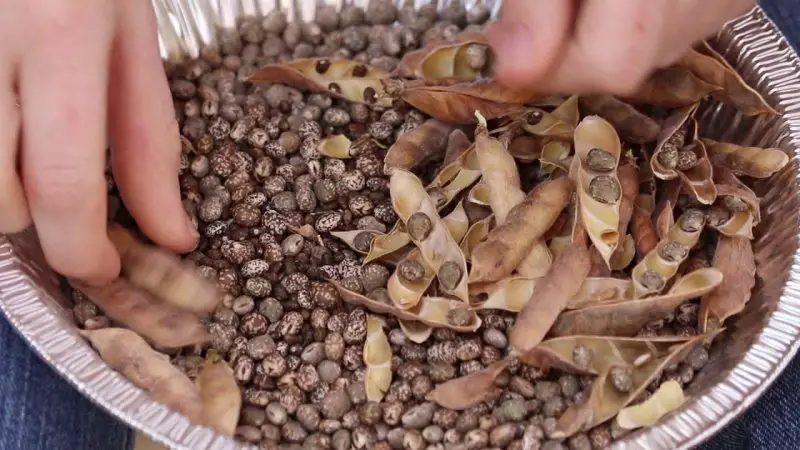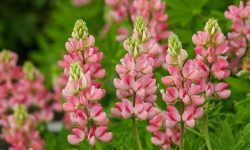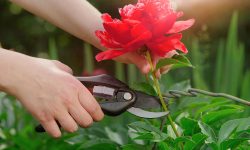Lupines are among the most captivating flowers in any garden, with tall spikes of color that seem to dance in the breeze. But what many gardeners don’t realize is that the real magic begins after the blooming season ends—when the seed pods start to form. Learning how to harvest lupine seeds properly ensures you can enjoy their beauty year after year without buying new plants. With just a little patience and the right timing, you can collect, store, and replant seeds that carry the same vibrant genetics as your favorite blooms.
However, harvesting lupine seeds is not as simple as waiting for pods to dry. Timing, handling, and storage play a crucial role in keeping seeds viable for the next growing season. If collected too early, they won’t mature; too late, and they may burst open and scatter. This guide will walk you through every step—how to recognize ripe pods, safely harvest them, and prepare your seeds for planting—so your garden continues to flourish with fresh, colorful lupines year after year.
Understanding Lupine Seed Development

Before harvesting lupine seeds, it’s essential to understand how they form and mature. After the vibrant flowers fade, each bloom develops into a slender pod that resembles a pea pod. These pods contain several round seeds that start off green and soft. As they mature, the pods gradually change color—from bright green to tan or brown—and begin to dry out. Inside, the seeds harden and turn from pale green to deep brown or black, depending on the lupine variety. This transformation signals that the plant is shifting from flowering to reproduction, storing all its energy in the seeds.
The entire seed development process can take several weeks, depending on the climate and growing conditions. In cooler regions, pods mature more slowly, while in warmer areas, they can ripen within a few short weeks after blooming. During this stage, it’s important not to water the plant excessively, as too much moisture can cause the pods to rot or split prematurely. Instead, allow them to dry naturally on the stem until they feel firm and slightly crisp to the touch. Observing these changes closely will help you recognize the perfect harvesting window.
Another critical point in seed development is timing. If you wait too long, the pods will burst open and scatter the seeds—a natural dispersal method for the plant. To prevent losing them, gardeners often monitor the pods daily toward the end of the season. Understanding this rhythm between bloom and seed maturity helps ensure that your collected lupine seeds are fully ripe, healthy, and ready for long-term storage or replanting.
When to Harvest Lupine Seeds
Timing is everything when it comes to harvesting lupine seeds. Collecting them too early means the seeds will still be soft and underdeveloped, which greatly reduces their ability to germinate. Waiting too long, however, allows the pods to fully dry and burst open, scattering seeds on the ground before you can gather them. The perfect harvest moment occurs when the pods have turned from green to light brown or tan but haven’t yet split. At this point, the seeds inside are hard, dark-colored, and rattle when shaken. This subtle sound is one of the best natural indicators that they’re mature and ready for collection.
In most climates, lupine seed pods reach this ideal stage in midsummer to early fall, though timing can vary depending on local conditions. Cooler, wetter areas slow seed maturation, while hot, dry weather speeds it up. It’s best to monitor your plants daily as summer progresses. Once the majority of pods begin to dry, harvest them gradually, starting with the ones that have turned brown first. You can also tie small paper bags over the ripest pods to prevent seeds from scattering if they burst unexpectedly. This technique works especially well in windy regions where pods may pop open suddenly.
Weather conditions also affect seed quality. Always choose a dry, sunny day for harvesting since excess moisture can cause mold or reduce germination rates during storage. Avoid picking pods right after rainfall or on humid mornings. Early afternoon is ideal, as both the pods and air are dry. With careful observation and patience, you’ll be able to collect your lupine seeds at peak maturity—ensuring strong, vibrant plants and spectacular blooms in the next growing season.
How to Harvest Lupine Seeds Safely
Harvesting lupine seeds safely requires a careful touch, as the mature pods can be quite fragile. Once the pods begin to turn brown and produce a faint rattle when shaken, it’s time to start collecting. Using clean, sharp scissors or pruning shears, cut the pods gently from the stems instead of pulling them by hand, which can damage nearby buds or developing pods. Handle them carefully because mature lupine pods are under tension and may burst open if squeezed. To avoid losing seeds, place a cloth, tray, or paper sheet beneath the plant before cutting—this helps catch any seeds that might pop out during harvesting.
Morning is the best time to harvest, when humidity is low and temperatures are cool. During this time, the pods are less brittle, reducing the risk of accidental shattering. Collect only dry pods; avoid those still green or damp, as they may contain immature seeds. After cutting, place the pods in paper bags or breathable cloth sacks rather than plastic containers, which trap moisture and promote mold growth. Label each bag with the lupine variety and harvest date. If you have several color varieties growing nearby, separating them during harvest will prevent accidental cross-mixing of seeds.
Once collected, let the pods dry naturally for several days in a shaded, well-ventilated area. As they dry, they’ll curl open, releasing the seeds inside. Gently shake or roll the pods between your palms to separate the seeds completely. Inspect each one, discarding soft, cracked, or misshapen seeds. The healthiest lupine seeds are smooth, round, and firm, with a uniform color. When handled with patience and precision, this simple process yields strong, viable seeds ready for cleaning, storage, or next season’s planting.
Drying and Cleaning Lupine Seeds
After harvesting, drying is the most important step in preserving lupine seeds for future planting. Freshly collected seeds retain internal moisture that can quickly lead to rot or mold if not removed properly. Begin by spreading the seeds—or entire pods if they are still closed—in a single layer on a clean, dry surface such as a screen, tray, or sheet of newspaper. Choose a well-ventilated area that receives indirect light rather than full sun. Too much heat can damage the seed embryo and reduce germination rates. Stir the seeds once or twice daily to ensure even drying and prevent clumping. Depending on temperature and humidity, this process usually takes between seven and ten days. Seeds are ready when they feel firm, dry, and make a faint clicking sound when dropped onto a hard surface.
Once drying is complete, the cleaning process begins. Break open any remaining pods gently by hand or roll them between your palms to release the seeds. Remove loose husks and debris using a mesh sieve or by lightly blowing across the tray. This helps separate the lighter chaff from the heavier, healthy seeds. Take time to inspect each batch carefully, keeping only those that appear plump, hard, and evenly colored. Discard soft, wrinkled, or discolored ones, as they are less viable and may attract moisture or pests during storage. Clean seeds not only look better but also store more safely and germinate more reliably the following season.
For extra assurance, some gardeners rinse the seeds briefly in lukewarm water to remove dust or residue, then allow them to dry again for one or two days. This final drying phase ensures every seed is completely moisture-free before storage. Once done, your lupine seeds should feel smooth, crisp, and lightweight—ready for safe storage through the winter months. Proper drying and cleaning protect their vitality, ensuring strong germination and a stunning display of blooms when planting season returns.
How to Store Lupine Seeds for Maximum Viability
Once your lupine seeds are completely dry and clean, proper storage becomes the key to maintaining their viability for the next growing season. Even well-harvested seeds can lose their germination ability if stored incorrectly. The goal is to keep them cool, dark, and dry—conditions that mimic natural dormancy. Begin by placing the seeds in labeled paper envelopes or small cloth bags rather than plastic containers, which can trap moisture. Label each package with the plant variety and harvest date to help you track freshness later. For longer preservation, you can seal the envelopes inside an airtight jar or metal tin to protect them from humidity and pests.
Temperature control is crucial for seed longevity. Store your lupine seeds in a location where temperatures remain consistently cool, ideally between 40°F and 50°F. A basement, cellar, or even the vegetable drawer of a refrigerator works perfectly. Avoid storing seeds near heat sources, windows, or in damp areas like garages, where temperature fluctuations and condensation can shorten their lifespan. Under optimal conditions, lupine seeds can remain viable for up to three years, though they germinate best when planted within the first two. Regularly check stored seeds for signs of moisture or mold and remove any compromised batches immediately.
For added protection, some gardeners include a small packet of silica gel or uncooked rice inside the storage container to absorb excess humidity. This simple step keeps the environment consistently dry, preventing fungal growth. When you’re ready to plant, allow the seeds to come to room temperature before opening the container to avoid condensation. With the right combination of dryness, coolness, and darkness, your lupine seeds will stay strong, healthy, and ready to bring another vibrant season of blooms to your garden.
How to Prepare Lupine Seeds for Planting
Preparing lupine seeds properly before planting is essential for successful germination and vigorous growth. Because lupine seeds have a tough outer shell, they can be slow to sprout if sown untreated. To overcome this, many gardeners use scarification—a simple process that helps water penetrate the seed coat. You can lightly nick the surface of each seed with a nail file or sandpaper, or soak them in warm water overnight before planting. Soaking softens the outer shell and encourages the seed embryo to awaken naturally. When done correctly, you’ll notice the seeds slightly swell, a good indication they’re ready to be sown. Avoid soaking longer than 24 hours, as excess moisture can cause rotting.
Once scarified or soaked, prepare your planting medium carefully. Lupines prefer loose, well-draining soil that’s slightly acidic to neutral, with a pH between 6.0 and 7.0. A mix of garden soil, coarse sand, and compost works best for both indoor and outdoor sowing. If planting indoors, use biodegradable pots so seedlings can be transplanted directly into the garden without disturbing their long taproots. When sowing outdoors, choose a sunny location with good airflow and minimal competition from other plants. Gently press the seeds into the soil about one-quarter inch deep and cover them lightly with a fine layer of soil.
Moisture balance is key during germination. Keep the soil consistently damp but never soggy, as too much water can suffocate the seeds. In ideal conditions, germination occurs within 14 to 21 days. Providing steady warmth, moderate light, and proper ventilation helps prevent fungal problems. Once seedlings develop their first set of true leaves, thin them gently to prevent overcrowding. Preparing lupine seeds with care ensures strong, resilient plants that will bloom beautifully in the coming season.
Testing Lupine Seed Viability Before Planting
Before planting your stored lupine seeds, it’s important to test their viability to ensure they will germinate successfully. Over time, even well-stored seeds can lose vigor, especially if exposed to temperature fluctuations or humidity. The simplest and most effective way to check their condition is through a water float test. Place the seeds in a bowl of room-temperature water and leave them for about 12 hours. Viable seeds will usually sink to the bottom, while hollow or non-viable ones will float. Discard any that remain on the surface, as they are unlikely to sprout. This simple test saves time, space, and effort by ensuring that only strong seeds make it to the soil.
For an even more accurate check, perform a small germination test before planting on a large scale. Place about ten seeds on a damp paper towel, fold it over them, and seal it inside a clear plastic bag. Keep the bag in a warm, well-lit area, and check it daily for signs of sprouting. Within one to three weeks, viable seeds will begin to develop tiny roots or shoots. Counting how many sprout will give you a rough percentage of your batch’s germination rate. If fewer than half germinate, you may want to re-harvest or refresh your seed stock.
Another indicator of seed health is appearance and texture. Viable lupine seeds are smooth, hard, and firm to the touch, with a consistent color. Discolored, wrinkled, or cracked seeds should be discarded immediately. By combining the float test and a small germination trial, you can confidently determine the quality of your seeds before planting—ensuring stronger, healthier plants and a more successful growing season.
How to Replant Harvested Lupine Seeds for Strong Growth
Replanting harvested lupine seeds is one of the most rewarding steps in the gardening cycle, allowing you to enjoy new blooms year after year. The key to success begins with timing. Lupine seeds can be sown either in early spring after the last frost or in late fall before the ground freezes. Fall sowing often produces stronger plants, as the seeds experience natural cold stratification during winter, which enhances germination. Choose a location with full sun and well-draining soil, as standing water or heavy clay will inhibit root development. Loosen the soil at least six inches deep to accommodate lupines’ long taproots, ensuring they can grow straight and strong.
Before sowing, prepare your seeds by scarifying or soaking them overnight to soften the tough outer shell. This step improves germination significantly by helping moisture reach the embryo. When planting outdoors, place the seeds about one-quarter inch deep and space them 12 to 18 inches apart. Cover lightly with soil and gently pat it down to secure them. If you are starting indoors, use biodegradable pots filled with a light, sandy mix, so seedlings can later be transplanted without disturbing their roots. Lupines don’t transplant well once established, so handle them carefully during early growth.
After sowing, keep the soil evenly moist but not waterlogged. Water deeply once or twice a week, allowing the top layer to dry slightly between sessions. Germination typically takes two to three weeks, depending on temperature. When seedlings reach three to four inches tall, thin them to prevent overcrowding and encourage healthy air circulation. With proper preparation, spacing, and moisture control, your harvested lupine seeds will grow into sturdy, vibrant plants ready to produce another spectacular display of flowers next season.
Common Mistakes to Avoid When Harvesting Lupine Seeds
Harvesting Too Early or Too Late
Harvesting at the wrong time is one of the most common reasons gardeners fail to save viable lupine seeds. If you collect pods too early—while they’re still green and pliable—the seeds inside won’t have completed their development. They’ll be soft, pale, and unable to germinate. Conversely, waiting too long causes the pods to become overly dry and burst open, scattering seeds on the ground before you can gather them. The key is to observe color and sound: mature pods turn tan or light brown and produce a subtle rattle when shaken. At that moment, the seeds are fully hardened and ready to harvest.
To avoid timing errors, check your lupine plants daily once flowering ends and seed pods begin forming. In warm, dry climates, pods can mature quickly—sometimes within just a few days—so vigilance is crucial. If you notice even one pod beginning to split, harvest the rest immediately. You can also place a paper bag around ripening pods to catch seeds if they burst unexpectedly. Patience and consistency are essential—perfect timing ensures you collect mature, viable seeds capable of producing vigorous, colorful plants next season.
Improper Drying and Storage
Even when harvested perfectly, lupine seeds can lose their vitality if dried or stored incorrectly. A common mistake is sealing them away before they’ve completely dried. Trapped moisture encourages mold, bacteria, and decay, rendering the seeds unusable. After harvesting, spread them in a single, thin layer on a clean tray, paper towel, or mesh surface. Keep them in a shaded, breezy location with good air circulation—never under direct sunlight, which can overheat and damage the delicate embryos. Stir or turn them daily to ensure even drying. Seeds are ready when they feel hard, dry, and cool to the touch.
Once thoroughly dried, store the seeds properly to preserve their strength. Paper envelopes or cloth bags are best for short-term storage, while airtight glass jars or tins protect them for the long term. Keep containers in a consistently cool, dry, and dark environment such as a basement or refrigerator drawer. Adding a silica gel packet or a bit of uncooked rice helps absorb excess humidity. Label each container clearly with the lupine variety and harvest date. With these steps, your seeds will remain fresh, viable, and ready for planting even after several months.
Ignoring Cross-Pollination and Seed Purity
Many gardeners overlook how easily lupines cross-pollinate, resulting in unexpected flower colors and hybrid offspring. Because bees and wind frequently transfer pollen between nearby plants, seeds harvested from mixed varieties often produce blooms that differ from the parent. While this natural cross-pollination can create beautiful surprises, it’s a problem if you want to preserve pure colors or specific traits. For instance, blue lupines may yield pink or white offspring when grown near other varieties.
To maintain true seed purity, isolate varieties by at least 100 feet or separate them with natural barriers like tall hedges. If your garden space is limited, cover selected flower spikes with fine mesh bags once they begin blooming. This allows air circulation while preventing unwanted pollen from entering. Tagging each plant clearly also avoids confusion during harvest. Saving pure seeds ensures reliable color and form in the next season’s blooms. Paying attention to pollination not only preserves consistency but also deepens your understanding of how these elegant plants reproduce naturally.
How to Encourage Self-Seeding in Lupines
Encouraging self-seeding in lupines is a simple and natural way to maintain their presence in your garden year after year without the need for manual seed collection or replanting. Lupines are prolific seed producers, and when given the right conditions, they can reseed themselves easily. To promote self-seeding, allow some flower spikes to mature fully after blooming rather than deadheading them all. As the pods dry, they will eventually split and scatter seeds nearby. Leaving a few pods intact through late summer lets nature handle the dispersal process. For best results, choose an area of the garden where the soil remains undisturbed, as tilling or heavy mulching can bury the seeds too deeply for germination.
Environmental conditions play a major role in successful self-seeding. Lupines thrive when their seeds are exposed to natural cycles of drying and cold stratification, which occur during autumn and winter. These seasonal changes help soften the hard outer seed coat, preparing them to sprout in spring. Avoid overwatering or adding thick compost layers during this time, as excessive moisture can cause seeds to rot before germination. Instead, keep the area lightly mulched and ensure good sunlight exposure. In milder climates, you can even encourage reseeding twice a year by allowing early blooms to set seed before pruning.
If you prefer a more controlled approach, mark the areas where your lupines have released seeds and avoid disturbing the soil. Once new seedlings emerge in spring, thin them to allow strong, healthy growth. Over time, self-seeded lupines create natural drifts of color that look effortless yet stunning. This low-maintenance method not only saves time but also preserves biodiversity by allowing the plants to adapt naturally to their environment. With patience, your garden will reward you with beautiful, spontaneous displays season after season.
Frequently Asked Questions About Harvesting Lupine Seeds
When is the best time to harvest lupine seeds?
The best time to harvest lupine seeds is when the pods have turned light brown but haven’t split open yet. The seeds inside should feel hard and make a slight rattling sound when shaken. Harvesting at this stage ensures mature, viable seeds for future planting.
How do I prevent lupine pods from bursting before harvest?
Lupine pods can burst quickly in warm, dry weather. To prevent seed loss, check them daily and harvest as soon as they begin to dry. You can also cover maturing pods with small paper bags to catch seeds if they pop open unexpectedly.
How long do lupine seeds remain viable in storage?
With proper drying and cool, dry storage conditions, lupine seeds remain viable for up to three years. However, germination rates are highest during the first two years. Keep them in paper envelopes or airtight jars away from humidity and direct sunlight.
Do lupine seeds need special treatment before planting?
Yes. Lupine seeds have a hard outer coat that benefits from scarification—lightly nicking the surface or soaking them in warm water overnight. This softens the seed coat, allowing moisture to penetrate and improving germination success.
Can I grow lupine seeds collected from hybrid varieties?
You can, but hybrid lupine seeds often don’t produce flowers identical to the parent plant due to cross-pollination. The resulting plants may show different colors or patterns. For consistent blooms, save seeds only from open-pollinated or pure lupine varieties.
Conclusion
Harvesting and replanting lupine seeds is a simple yet deeply rewarding process that connects gardeners to nature’s rhythm. With patience, timing, and proper care, each tiny seed holds the promise of next season’s beauty. Whether you carefully collect and store them or allow nature to self-seed, lupines return stronger and more vibrant each year. Their stunning blooms not only fill your garden with color but also support pollinators and biodiversity. By mastering the seed cycle, you ensure that your garden continues to thrive—alive with life, color, and renewal season after season.






